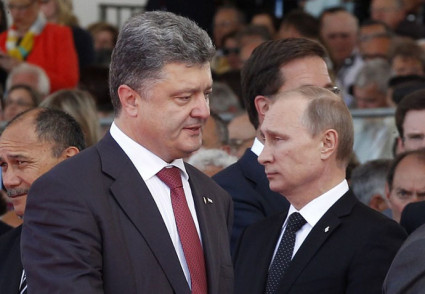On Thursday, Ukrainian President Petro Poroshenko and Russian counterpart Vladimir Putin (pictured) agreed to a cease-fire in eastern Ukraine between Kiev’s force and separatists. The halt in fighting would take effect from Sunday, with weapons being pulled back from a 31-km (20-mile) wide zone.
See Ukraine Analysis: A Deal Which Is “Neither Breakthrough Nor Disaster”
Speaking with BBC Radio Wales on Thursday evening, I assessed whether the deal is likely to hold — and what comes next.
Listen to interview from 2:09.22
This deal is roughly the same that was reached almost five months, but it broke down because there was continued fighting in the area, there was continued instability, and the Russians put in troops and weapons across the border. For that reason, I think it may break down again….
You have to trust that the leaders will stick to the deal. Perhaps more importantly even if the Presidents agree, you can’t control the local groups on the ground. All it takes is one clash and the deal can rapidly unravel.
The conversation also considers the difficult position for the US:
The Obama Administration wants to put pressure on Russia. But at the same time it needs Russia’s cooperation over an Iran nuclear deal, and it wants to work with Moscow for a resolution of the Syrian deal.
So if Putin breaks the deal, Washington faces a tough choice over whether it hits back.

